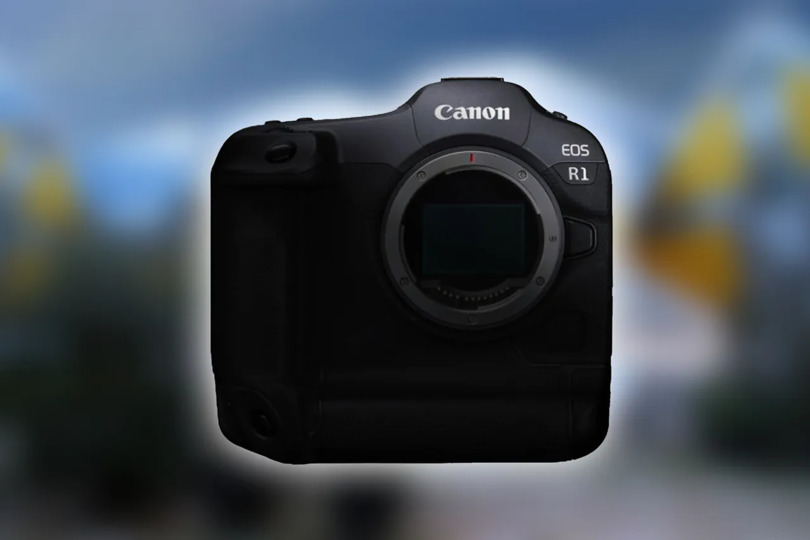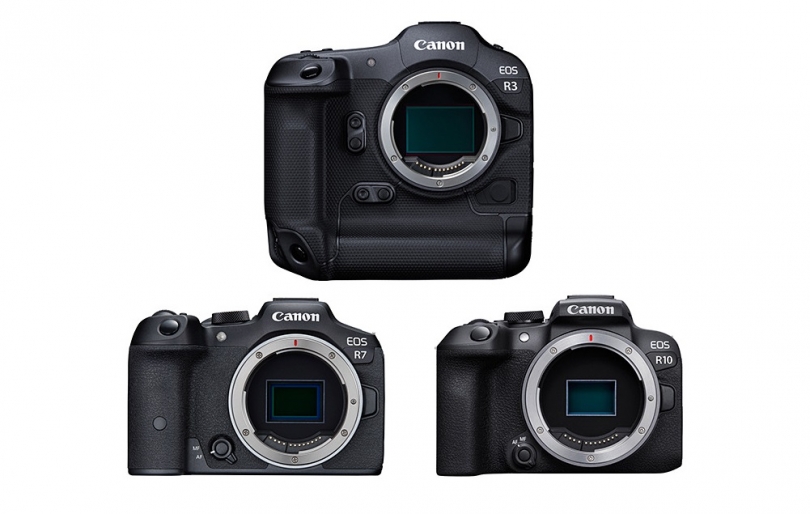
Hands-on with the Canon EOS R3 The Canon EOS R3 is here! After years in development and months in testing with selected photojournalists around the world, we've been able to spend some time with a late pre-production sample of Canon's newest high-end ILC.
Click through for more information about the Canon EOS R3, our thoughts on how it handles, and a breakdown of its major features.
Ergonomics
Ergonomically, the EOS R3 has a lot in common with both its 1-series DSLR forebears and the EOS R5, but there are major differences.
The most obvious (and one of the most significant) is its size and weight. In terms of its general bulk, the EOS R3 falls between the EOS R5 and the EOS-1D X Mark III, weighing in at 1015g (35. 8oz), rather than 1440g (50. 8oz).
Ergonomics
As you can see, the EOS R3 is quite a handful (and it has substantially more presence in the hand than the R5), but it's smaller than the EOS-1D X Mark III, measuring 142mm (5. 6 in) tall compared to 168mm (6. 6 in) for the DSLR.
Like the EOS-1D X Mark III, the R3 is built for speed, and in a first for Canon, it uses a newly-developed 24MP Stacked CMOS sensor, capable of full-resolution 14-bit Raw shooting at up to 30 fps with the electronic shutter. As we'd expect, the sensor also supports the latest iteration of Canon's Dual Pixel CMOS autofocus, and it's capable of 60 AF and AE calculations per second. In brief - this thing is fast.
Front controls and grip
An integrated vertical grip gives the EOS R3 a chunky feel, but the overall impression is of a camera remarkably light for its size. This picture provides a good view of the duplicated function buttons at 9 o'clock and 7 o'clock around the lens mount, and the port at 5 o'clock is for a traditional Canon 3-pin threaded shutter release.
Vertical controls
A closeup of the vertical shutter release, showing the duplicated control dial and M-Fn button for vertical orientation shooting.
Top controls
Ergonomically, the EOS R3 takes a lot of cues from the EOS-1 series DSLRs, including drive / AF and metering modes buttons on the upper left of the top-plate (seen from this perspective) and the small M-Fn button just behind the shutter release The integrated mode button and control wheel on the right, however, are inherited directly from the EOS R models. Notice that like the EOS-1 series, there is virtually no wasted space on the top of the R3 at all.
This view also shows off the waterproof cap on the hot shoe, which features additional electronic contacts to support several new accessories, including a shotgun mic.
Rear controls
It's a similar story on the back of the R3, which is peppered with buttons and control points, on three sides of the 4. 15M-dot 3. 2" LCD screen. The R3 inherits the classic ON/LOCK/OFF switch and large rear control wheel which have been a feature of Canon 1-series cameras in one form or another for more than three decades. Meanwhile, the touch-sensitive AF-ON button is lifted from the current EOS-1D X Mark III.
When pressed in, the AF-ON button initiates AF in a conventional way (or does whatever you've chosen to customize it to do) but it can also serve as a quick AF point placement control, via a brush of your thumb. If you're not ready to enter the future quite yet (wait until you hear about Eye Control. . . ) this feature can be disabled in favor of the more traditional joystick just below it and to the left. Both controls are duplicated for vertical shooting.
Rear LCD and video specs
In a first for a pro-grade Canon ILC, the EOS R3 features a fully articulating rear touchscreen, which can be rotated all the way out for high or low-angle shooting, and video work.
Speaking of video, the EOS R3 packs in some impressive specifications, with the headline being internal 6K Raw recording. Probably more useful to most videographers, however, is the option of oversampled 4K video at up to 60p, or sub-sampled 4K at up to 120p.
Electronic viewfinder
The rear screen is nice enough, but one of our favorite features of the EOS R3 is its electronic viewfinder. It's a new, highly detailed 5. 69M dot OLED finder, and can refresh at up to 120fps for a genuinely life-like image. Furthermore, Canon has tweaked the finder experience to offer an OVF Simulation mode that exploits the wide dynamic range of the OLED panel to deliver a more natural view where brights are realistically bright and blacks don't 'block up' so aggressively.
The result is an electronic viewfinder experience that's as close to an optical finder as anything we've ever used (and arguably, after a while, virtually indistinguishable).
Eye Control
Built into the EVF assembly is one of the E3's most exciting features - Eye Control Focus. Last seen in Canon's film-era SLRs in the early 2000s, we'd long assumed that Eye-Control was dead, as far as Canon was concerned. Back in the 90s, the basic premise of Eye Control was simple: the camera focuses where you look. The reality was a little less exciting. With the exception of the EOS 3, the cameras which featured Eye Control only offered a handful of AF points, and various factors (eye color, eye shape, and whether the user was wearing glasses) made a big difference to its effectiveness.
Even in the EOS 3, with 45 AF points, in which first-generation Eye Control technology reached its technical apogee, performance could still be spotty. There was a reason why Canon didn't feel comfortable adding Eye-Control to the professional film-era EOS-1V.
But now it's back!
Eye Control
This (simulated) image shows what you'll see through the viewfinder when Eye Control is in operation. The yellow bullseye reticule represents your point of attention/focus, and as you move your pupil around the scene, the reticule responds accordingly. On a half-press of the shutter, focus is initiated on the object nearest to the reticule.
While Canon still offers some caveats – photographers with very pale blue eyes, or certain ocular conditions, or who wear certain glasses may experience mixed or reduced performance – this new iteration of Eye Control is a million miles from our experience with the film SLRs that first offered the technology. It's significantly more reliable and far more versatile. In fact, once you've used it (assuming it works for you) it's hard to imagine working in any other way.
Dual CFe and SD card slots
Like the EOS R5, the EOS R3 features twin card slots for CFexpress (Type B) and UHS-II SD media. As we'd expect from a high-end camera, the card door is sealed with a gasket to prevent dust and moisture from making its way into the camera.
I/O ports including wired LAN
In common with other professional ILCs, the EOS R3 offers a wired LAN port alongside various other more conventional I/O ports for ultra-fast data connection at (for example) major sporting events. This view also shows the lock which keeps the R3's large capacity battery securely installed in the base of the vertical grip.
LP-E19 battery
And here's a closer look at that battery: it's the same LP-E19 that powers the EOS-1D X Mark III, but unsurprisingly, the EOS R3's CIPA rated battery life is substantially less than its DSLR peer, at around 440 shots per charge. As expected, in our shooting so far we've eked out significantly more images per charge than that in normal use, but at least for now, today's crop of high-end mirrorless ILCs are unable to match their DSLR forebears for stamina. To that end, the EOS R3 cannot be powered over USB (but it can be charged via USB, using 'Canon USB PD-compliant devices').
So that's the new Canon EOS R3 - what do you make of it? Let us know in the comments.
. dpreview.com2021-9-16 17:00






